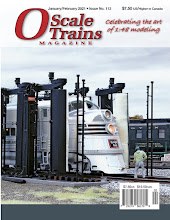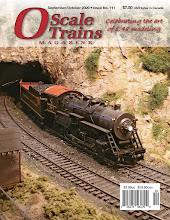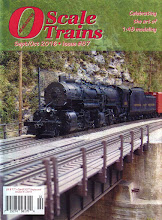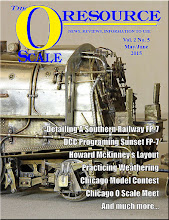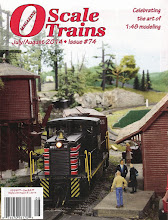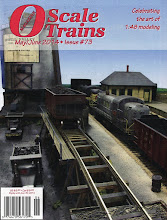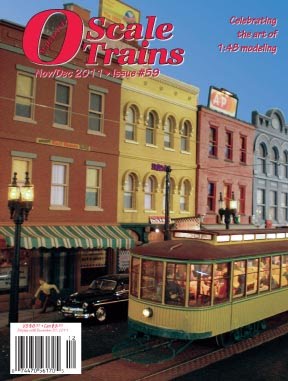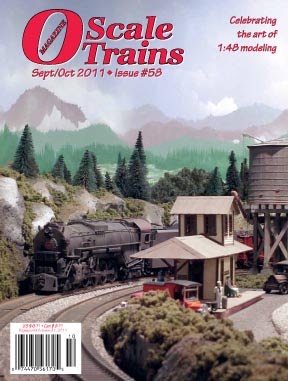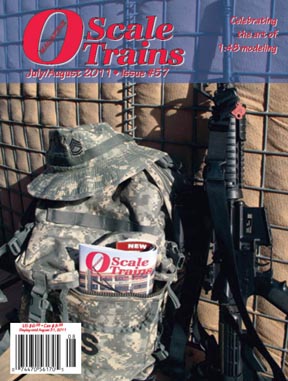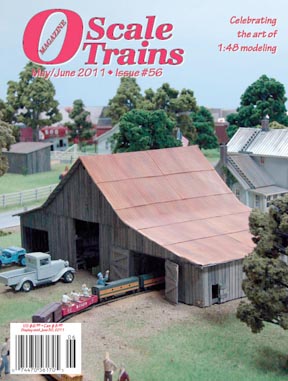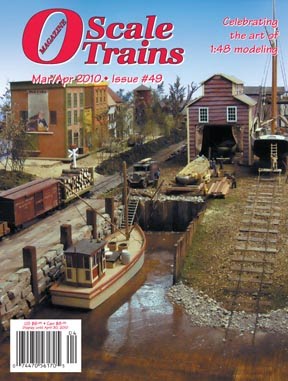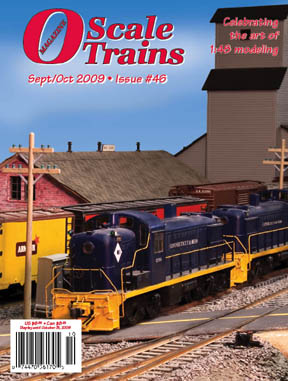I wanted to create a box that would allow me to control a portion of track on my layout that would allow to easily switch the track from mainline power to the programming track. And then it would let me decider further if I wanted to use a Lokprogrammer or Decoder Pro. One would note that I used to use QSI Titan decoders, but I have since moved to Loksound for full sound decoders. They are still innovating and their product can be found everywhere. Quite the opposite of QSI, despite QSI having some really neat features.
First I designed the controls inside the box. I also wanted LED's to be on tell me when certain features were on. Very few components were needed...some resistors, LEDs, and a rectifier in the case where one of the power sources is straight AC. Essentially there are two DPDT switches. The leftside selects between powering the track with DCC or powering the track with whatever programming choice I have made on the right side (assuming those are powered on.)
I used a project box from Digikey. There weren't many options and it was one the biggest ones I could find that was deep enough to hold the electronics, but also sit vertical attached to the layout rather than into the aisle. I didn't get a photo of the electronics installed on the inside...oh well. There wasn't much to see except for wires connecting the terminals to various small components.
Now for construction photos of the box itself.
First up, the front side. The face has the inset on it. The dimensions were on the digikey website which made it easy. I used that to draw up a rectangle and correctly place the lettering and circles for the LED's, so I can drill those out. I printed two copies. One was the template to allow me to drill out the LED's. The second was laminated and then glued to the box. I was able to put the LED holders and switches in easily after that, which cover up any imperfect edges.
Second is the backside. I bought a cheap 10-terminal plate and unscrewed the terminals off the plate. I used the plate as a template and drilled out the box to allow the terminals to go through the box. I had issues lining up the plate after I put the terminals back in, so I ended up just cutting out a rectangle for the upper row. The screws hold it in place anyway.
You will notice another terminal to the right of the plate. That is for the Lokprogrammer Power input from the power supply it has. I modified the wire to take the proper the connection. All other wires were connected to Banana Plugs I got off eBay. The front and back of the project box are screwed together.
As for mounting this on the layout fascia. If you don't have a multi-max tool, you must get one. It shakes the hell out of your hand, but it makes the best precision cuts. The project box is held on by two rows of 1" velcro.
Monday, February 18, 2019
Sunday, February 17, 2019
A day at the Bay Ridge Model Railroad Club
Back in November 2018, I was privileged with the ability to visit what I believe to be the last (and perhaps also the first) Outside Third Rail club down in Bay Ridge, Brooklyn, NY.
The Club's railroad is called the Central Connecting Railroad.
I may post some photos at a future date, but I compiled some video for your viewing pleasure.
For more information on the club and to become a member:
http://knighttime.tripod.com/bayridgemodelrailroadclub.html
The Club's railroad is called the Central Connecting Railroad.
I may post some photos at a future date, but I compiled some video for your viewing pleasure.
For more information on the club and to become a member:
http://knighttime.tripod.com/bayridgemodelrailroadclub.html
Sunday, February 3, 2019
Project/Reference Material Cleanup and the Lionel 2019/2018/2017 Catalog Thoughts
Instead of doing some fun stuff like writing real blog posts or getting back to some artwork projects, I just spent most of today sorting all of my train related projects and reference material across two computers and two iOS devices in order to make sure I had one true and up to date copy of everything I need for documentation with my progress and future needs in the hobby. Been a long time in the making, but its finally done.
I have about 110 GB of files. I guess I should go get me a 128 or 256GB flash drive and try to keep that as my main archive and a backup on something else. Another option that would be far more costly is to get a dropbox account and keep everything tied together on there.
The Lionel 2019 catalog came out make 2 weeks ago. I don't usually discuss catalogs, but this is my take (and a reminder to myself for later) on what I am looking at potentially getting at some point from the most recent Lionel catalogs. I rarely preorder as I've seen too many disappointments recently from Lionel and MTH, especially with the Lionel quality. From the sidelines, I hope they figure out how to turn that around as its hurting the hobby (or at least O gauge/O Scale) for any newcomers that come in and all they know is the Lionel name.
Below are a few images of what I saw that might fit my roster...
Maybe both SOU and 1 N&W.
Need to check my books if this is prototypical. My hunch is no.
I thought this FEC car matched a Southern ACF or PS 52-seat coach prototype, but looking at photos, its not quite right. Looking at the real modern-day St. Augustine, I see they messed up the skirting and are missing significant and important roof detail as well. I had hope in Lionel doing 21" scale passenger cars accurately, but I don't know anymore...
Looks good enough for me since its based on a 1966 Jim Sands photo. If this just works on AC power and doesn't require TMCC/Legacy, I can convert this to 2R and it comes with some nice "soundcar-like" sounds already built in.
I'm thinking this SAL car is not prototypical, but I'll look into it.
So they finally did these. I had these in the works on my workbench. The RPO car is pretty close to the real thing. I have to check, but may need to update the doors and double check if they used the right font. The green looks way too dark too, but it'll be interesting what they actually deliver. The Baggage would be an okay stand-in, but is definitely wrong.
This one dates way back to 2017. I've seen them in the wild at $78, which is a lot considering I don't want the flatcar. I just want the trailer. We'll see if I get one way down the line or they offer the trailers by themselves in a later catalog.
I have about 110 GB of files. I guess I should go get me a 128 or 256GB flash drive and try to keep that as my main archive and a backup on something else. Another option that would be far more costly is to get a dropbox account and keep everything tied together on there.
The Lionel 2019 catalog came out make 2 weeks ago. I don't usually discuss catalogs, but this is my take (and a reminder to myself for later) on what I am looking at potentially getting at some point from the most recent Lionel catalogs. I rarely preorder as I've seen too many disappointments recently from Lionel and MTH, especially with the Lionel quality. From the sidelines, I hope they figure out how to turn that around as its hurting the hobby (or at least O gauge/O Scale) for any newcomers that come in and all they know is the Lionel name.
Below are a few images of what I saw that might fit my roster...
Maybe both SOU and 1 N&W.
Need to check my books if this is prototypical. My hunch is no.
I thought this FEC car matched a Southern ACF or PS 52-seat coach prototype, but looking at photos, its not quite right. Looking at the real modern-day St. Augustine, I see they messed up the skirting and are missing significant and important roof detail as well. I had hope in Lionel doing 21" scale passenger cars accurately, but I don't know anymore...
Looks good enough for me since its based on a 1966 Jim Sands photo. If this just works on AC power and doesn't require TMCC/Legacy, I can convert this to 2R and it comes with some nice "soundcar-like" sounds already built in.
I'm thinking this SAL car is not prototypical, but I'll look into it.
So they finally did these. I had these in the works on my workbench. The RPO car is pretty close to the real thing. I have to check, but may need to update the doors and double check if they used the right font. The green looks way too dark too, but it'll be interesting what they actually deliver. The Baggage would be an okay stand-in, but is definitely wrong.
This one dates way back to 2017. I've seen them in the wild at $78, which is a lot considering I don't want the flatcar. I just want the trailer. We'll see if I get one way down the line or they offer the trailers by themselves in a later catalog.
Saturday, February 2, 2019
Layout Track Wiring
Well, I don't have the ability to work on the layout, so now I can catch up with some blog posts here and there with projects I did awhile ago.
How do we get power to the rails?
Ignoring the dead rail movement, most modelers and books suggest soldering directly to the side of rails and I suppose you could do that on the side that no one sees, but I wanted to make it so one couldn't see after ballasting, the wires that power the layout at all.
I thought about soldering to the bottom of the rail, like I did on the AtlasO switches that I beefed up to ensure they wouldn't fail on me, but it was already a lot of work to cut out the ties and solder the wires to the switches without melting the plastic ties. Then I had an idea to solder the the rail joiners like AtlasO sells. Worried about contact, I also clasp down on the rail joiners with needle nose pliers to ensure they fit the rails super tight.
Below is a photo gallery of some work I did on the switches, followed by my method of soldering power leads to the rail joiners. For planning purposes, I figured out where to put my feeders based on a general track plan I had for AtlasO track. After having the track in place, I would mark on the roadbed where the rail joiners would be and then drill holes to have them come up in exactly the right place.
Now for the photo essay.
The first track I initially laid. This is where Pegram Shops will be and it is raised up on thin sheet of wood in case it needs to be moved in the future.
I have a previous blogpost on how I did these, but I had gone through and soldered new jumpers across the tracks that can handle higher current. I also tapped and added wires to the frogs, though I'm starting to think I can get away with unpowered frogs.
A photo when I set up a little switch assembly line to add/solder the new jumpers on the switches.
Some jumper creation close ups to replace the existing ones.
To conceal these jumpers, I made sure the solid-core wire was flexed downward towards the ties. That way when ballasting occurs, you can't see these.
This shows a few things. The 18/2 I used for my feeders. The tunes I can jam to while doing this work. The Pegram Shops tracks in the distance are separate the same distance and consist of two pieces of track, a 10" and I believe ME flex (that doesn't really flex.) For now, there is a piece of wood held down with clamps to keep anything from rolling off onto the floor. The double-track mainline are the two tracks closest to the camera on the right.
This image shows the that there is a gap in the AtlasO track for wires. I have to be careful in how I solder to the rail joiners so that the feeders come down exactly in this gap.
Here's a close up of clearance for the feeder wires. You cannot put it on the right side without cutting in the plastic and hurting the integrity of the track connector.
Here's what a complete piece of track looks like.
So here's an example of how the process works. We have a track in position and then drill the two holes for the feeders.
I used this bit for the holes.
Find the holes underneath and feed the feeders through the holes.
Connect the joiners to the tracks. This shows this works with other track too as long as the ties aren't in the way. This is ME track I believe.
The finished result. Can't see the wires at all.
Another example. Won't see it when ballasted.
Just a random progress shot. It showed I used big mats of cork as it was easier to do than line up every track exactly.
A parting shot looking down the Pegram Shops trackage.
How do we get power to the rails?
Ignoring the dead rail movement, most modelers and books suggest soldering directly to the side of rails and I suppose you could do that on the side that no one sees, but I wanted to make it so one couldn't see after ballasting, the wires that power the layout at all.
I thought about soldering to the bottom of the rail, like I did on the AtlasO switches that I beefed up to ensure they wouldn't fail on me, but it was already a lot of work to cut out the ties and solder the wires to the switches without melting the plastic ties. Then I had an idea to solder the the rail joiners like AtlasO sells. Worried about contact, I also clasp down on the rail joiners with needle nose pliers to ensure they fit the rails super tight.
Below is a photo gallery of some work I did on the switches, followed by my method of soldering power leads to the rail joiners. For planning purposes, I figured out where to put my feeders based on a general track plan I had for AtlasO track. After having the track in place, I would mark on the roadbed where the rail joiners would be and then drill holes to have them come up in exactly the right place.
Now for the photo essay.
I have a previous blogpost on how I did these, but I had gone through and soldered new jumpers across the tracks that can handle higher current. I also tapped and added wires to the frogs, though I'm starting to think I can get away with unpowered frogs.
A photo when I set up a little switch assembly line to add/solder the new jumpers on the switches.
Some jumper creation close ups to replace the existing ones.
To conceal these jumpers, I made sure the solid-core wire was flexed downward towards the ties. That way when ballasting occurs, you can't see these.
Another AtlasO switch upgrade...the frogs can move...and possibly cause
shorts...so better to cut pieces of styrene into the gaps and glue them
in there and sand them in place to prevent this. Another assembly line
was made for that.
Finished result of the styrene frog insulators. Thanks Ed Rappe for the tip.
This image shows the that there is a gap in the AtlasO track for wires. I have to be careful in how I solder to the rail joiners so that the feeders come down exactly in this gap.
Here's a close up of clearance for the feeder wires. You cannot put it on the right side without cutting in the plastic and hurting the integrity of the track connector.
Here's what a complete piece of track looks like.
So here's an example of how the process works. We have a track in position and then drill the two holes for the feeders.
I used this bit for the holes.
Find the holes underneath and feed the feeders through the holes.
Connect the joiners to the tracks. This shows this works with other track too as long as the ties aren't in the way. This is ME track I believe.
The finished result. Can't see the wires at all.
Another example. Won't see it when ballasted.
Just a random progress shot. It showed I used big mats of cork as it was easier to do than line up every track exactly.
A parting shot looking down the Pegram Shops trackage.
Subscribe to:
Posts (Atom)






































